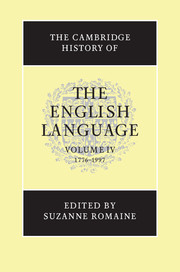2 - VOCABULARY
Published online by Cambridge University Press: 28 March 2008
Summary
Vocabulary is central to both the system and the use of language. Words are what are pronounced and written and organised into sentences and other grammatical combinations, being the fundamental units of meaning. Words are also what ordinary users think of as language, for they are accessible and reflect more fully the whole culture and respond more quickly to changes in society than do other aspects of language.
The study of the English vocabulary
Vocabulary study has a long history, going back in the Western world to Plato's Cratylus. The study of English vocabulary, however, received a sharp boost with the interest of members of the Philological Society in making a New English Dictionary, eventually renamed The Oxford English Dictionary (Murray, Bradley, Craigie & Onions 1884–1933). In the middle of the nineteenth century, Dean Trench (1851, 1855), who had been instrumental in beginning the OED, was a significant contributor to the field. Caught in the Web of Words (Murray 1977) traces the history of this major dictionary, and Empire of Words (Willinsky 1994) critically analyses its strengths and weaknesses.
The most important general English dictionary of the twentieth century is Webster's Third New International Dictionary of the English Language, edited by Philip Babcock Gove (1961). Its history has been traced by Herbert C. Morton (1994). The most important new specialised dictionary of the century is the Dictionary of American English (Cassidy and Hall 1985–). The history of English language lexicography before the period covered by this volume has been treated by Starnes and Noyes (1946), and that of American lexicography during the post-1775 period by Algeo (1990).
- Type
- Chapter
- Information
-
The Cambridge History of the English Language , pp. 57 - 91Publisher: Cambridge University PressPrint publication year: 1999
References
- 4
- Cited by



